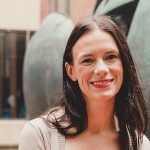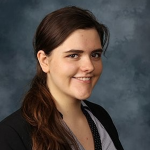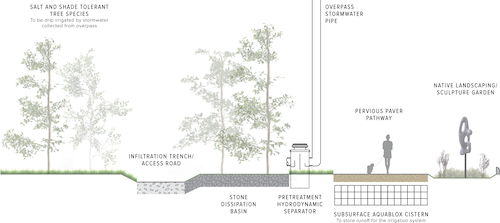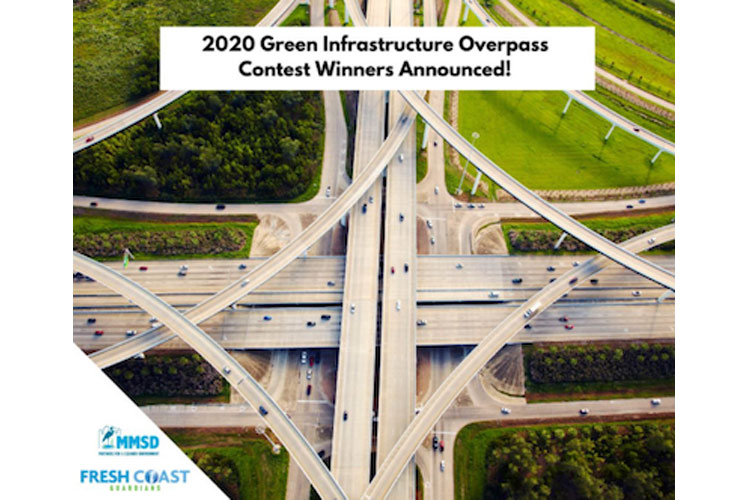Imagine the often grimy patches of earth under highway overpasses transformed to green spaces that help clean our drinking water source, store water after heavy rains, and provide a space for public agencies to grow trees.
For their visionary, sustainable design featuring stormwater-fed tree farms planted in the shadows of Milwaukee’s highway overpasses, four UWM civil and environmental engineering alumni are enjoying accolades.
The alumni were part of a nine-member, interdisciplinary team from HNTB, a national, design consulting firm, that in February was awarded first place and $5,000 in Milwaukee Metropolitan Sewerage District’s (MMSD) 2020 Greater Milwaukee Green Infrastructure Overpass Challenge. The contest, funded by the Tellier Foundation, asked teams for innovative designs to manage polluted stormwater runoff from freeway overpasses.




“It’s an exciting time to be working in this profession”
Team HNTB included four graduates of UWM’s College of Engineering & Applied Science’s Civil & Environmental Engineering programs: Dan Cary (MS 2019, BS 2011); Jacob Moser (BS 2019): Janeé Pederson (MS 2018, BS 2014); and Leah Stewart (BS 2020).
Stewart says UWM’s professors, coursework and internships prepared her to work in a rapidly changing field, one that is now addressing urban drainage needs. “Green and blue infrastructure is an important part of that change,” she says, adding that she enjoys being part of the growing movement to address the nation’s infrastructure in a manner that considers the environmental effects of decisions.
“It’s an exciting time to be working in this profession,” Stewart says.

Tree farms are the heart of HNTB’s design
The heart of the team’s design is salt- and shade-tolerant trees that are drip-irrigated by stormwater collected from an overpass. “The water from overpasses is really dirty and polluted,” explains Pederson. Treating it as a resource, she says, could help prevent pollution from reaching lakes and rivers and reduce the volume of water that enters the city’s water system.
The remaining area of the team’s design includes a walking path constructed with pervious pavers, benches made from recycled materials, sculptures created by local artists using recycled materials, and native landscaping. Educational signs support lessons on ecology and water quality.
Like all entries to the contest, Team HNTB’s design aimed to capture 2-inches of rain for a hypothetical roadway drainage area 50 feet wide by 200 feet long, 100 feet above the urban landscape.
The tree farm would act as an urban nursery, says Pederson. Public sector organizations (WisDOT, the city of Milwaukee, for example) would buy saplings on their own, then use the underpass to grow them. When their trees reached maturity, they would be replanted elsewhere.
Because mature trees can cost significantly more than saplings, this could save money on public projects. Meanwhile, Pederson says, the trees would be acting as sponges as they grew toward their hardened water sources above.
You can see the top three submissions to the Overpass Challenge here.
Milwaukee’s growing stormwater problem
Polluted stormwater runoff is one of the biggest threats to rivers and lakes across the United States. When rainwater does not get soaked up by the ground, it can pick up pollutants as it runs along surfaces to join the water system. The paved landscapes of an urban setting contribute to this problem.
In coming years, more stormwater could enter Milwaukee’s sewer system. Changing weather patterns suggest a warmer and wetter climate in the region’s future – including shorter-lasting, higher-intensity storms. In addition to the threat of increased water pollution, these higher volumes of stormwater may be more than our infrastructure can handle.
UWM part of the solution
Through its civil and environmental engineering programs, UWM is helping to meet the need for new ideas to solve these problems.
“UWM’s location is key,” says Pederson, who completed three summer internships with MMSD while a UWM undergraduate student. “Milwaukee has become a hub for water-focused businesses, technologies, talent and collaboration, a place where students can find a variety of opportunities for hands-on experiences through internships and the like.”
To meet the enthusiastic and growing demand for environmental engineers, UWM in 2020 launched a BSE in Environmental Engineering. The interdisciplinary program is training students in the broad environmental field of engineering, including air, water and soil. It augments UWM’s existing relationships with more than 200 water technology businesses in the region and with economic development organizations dedicated to advancing freshwater technologies.
You can learn more about the BSE in Environmental Engineering here.
